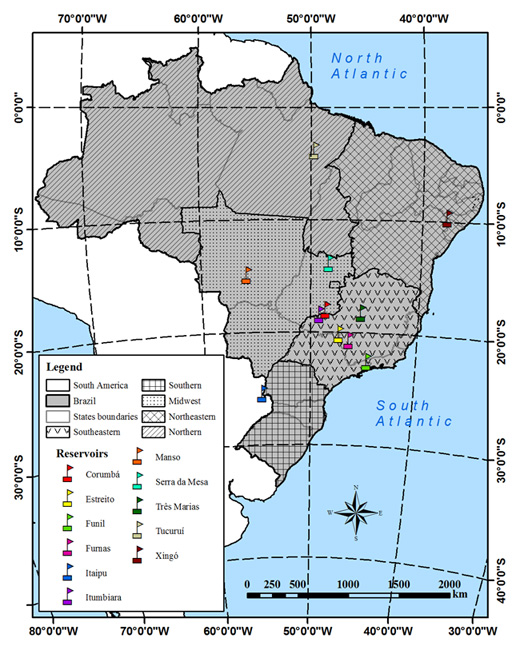Potencial do uso dos solos da bacia hidrográfica do alto rio Meia Ponte, Goiás (doi:10.4136/ambi-agua.914)
Palavras-chave:
Capacidade do uso do solo, coeficiente de rugosidade, solos do cerrado
Resumo
O planejamento e o manejo ambiental são atividades que visam o controle e adequação do uso das terras com a finalidade de maximizar a produtividade agrícola por meio de um sistema de exploração capaz de sustentar as atividades humanas com um mínimo de distúrbios nos processos físicos, ecológicos e sociais. Para garantir o uso racional dos recursos naturais devem-se considerar as classes de solo bem como suas características físicas e químicas e os atributos morfométricos da bacia hidrográfica onde estão inseridos, pois esses indicam a intensidade de cultivo e o manejo a ser aplicado ao solo para que não haja exaustão da capacidade produtiva em decorrência da erosão. O objetivo desse trabalho foi avaliar os atributos morfométricos em relação à distribuição dos solos na paisagem e sugerir o potencial de uso da terra com base no coeficiente de rugosidade na bacia hidrográfica do alto rio Meia Ponte, Goiás. Dentre as variáveis necessárias ao planejamento de bacia, a análise dos atributos morfométricos associada às características dos solos e relevo revelou-se de grande importância por fornecer a definição de sua potencialidade. Quanto ao uso dos solos, com os resultados obtidos a partir do cruzamento do levantamento dos solos, declividade média e do coeficiente de rugosidade, verificou-se que o uso potencial da bacia é a agricultura e a pecuária, desde que mantida as demais áreas para a preservação da vegetação natural e de reflorestamento.
Publicado
26/04/2013
Edição
Seção
Artigos
Autores mantêm os direitos autorais pelo seu artigo. Entretanto, repassam direitos de primeira publicação à revista Ambiente & Água - An Interdisciplinary Journal of Applied Science. Em contrapartida, a revista pode transferir os direitos autorais, incluindo direito de enviar o trabalho para outras bases de dados ou meios de publicação. A revista exerce a licença CC BY 4.0






